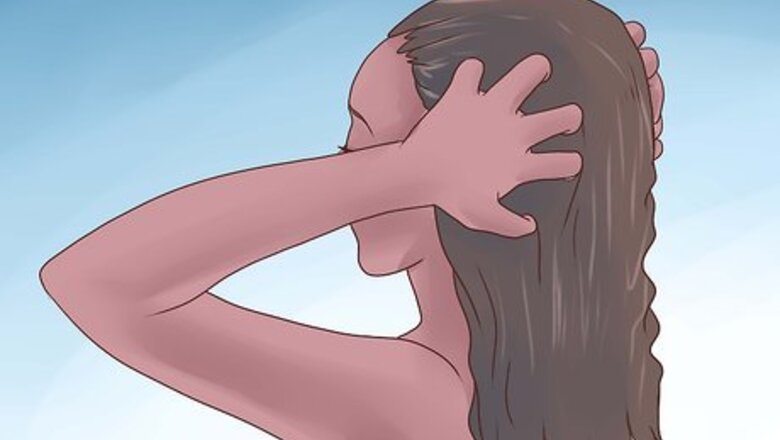
views
Taking Care of Your Hair to Make it Grow
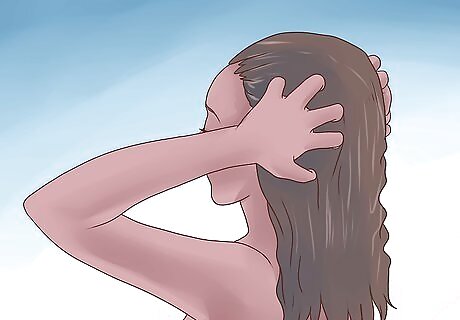
Condition your hair liberally. Black women tend to have curly new-growth. These curly roots make it difficult for your hair's natural oils to move down the hair shaft and moisturize the length of your hair. Try co-washing (conditioner washing, using just conditioner instead of shampoo and conditioner). Some women do it weekly, some after 5 days, but not daily because product can dry your hair out. Some women also find that wash days take a lot of work and their hair takes forever to dry. Try co-washing weekly, and shampoo as needed but don't wait any longer than 4 weeks - so shampoo at least once a month. There are some women who do wash their hair every day, but with just water. Deep condition with every wash. Deep conditioners containing olive, avocado or sweet almond oil work well. Play around with different products and see what works best for your hair personally. Don't be afraid to move out of the "ethnic" hair aisle. Apply heat to your hair and wear a shower cap while you wait--heat activates the conditioner. You can sit under a hood dryer or wrap your head in a towel that has been soaked in hot (but not so hot as to burn you) water; or you can also let your body heat condition your hair. Avoid getting deep conditioner on your scalp. The conditioner can clog your pores and cause alopecia, clogged and inflamed hair follicles, hair loss.
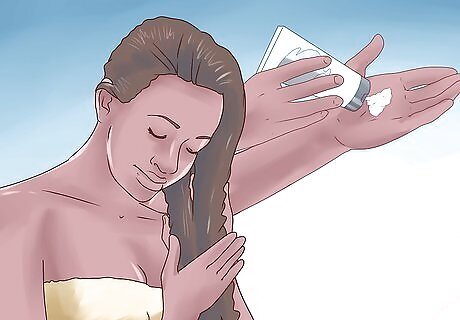
Apply a moisturizer (which does not contain petroleum jelly, petrolatum or mineral oil) to your hair. Wet your hair with water. Start about 1" (2.5 cm) away from the roots and apply the moisturizer all the way to the ends! Moisturize daily or as your hair requires - you want your hair to feel soft and pliable. You may have to experiment to find what works for you. Seal the moisture in. This can be done by using a natural oil like coconut oil, olive oil etc. right after applying the moisturizer (which can be water) so even applying oil on damp hair without a moisturizer can work. Do it in sections, it is easier.
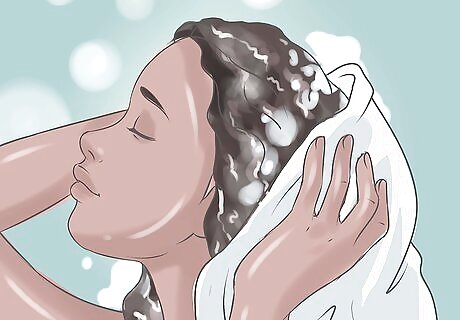
Squeeze out excess water with a microfiber towel. If you have a terry cloth towel you must be sure to not stroke your hair with it, or else strands of hair will latch onto the textured fabric of the towel and as you bring your hand down you'll hear a lot of popping, which is the sound of the hair breaking off. To use the terry cloth, take a section of hair and with the towel over your hand grab the section and squeeze. You should feel the towel get drenched. Unclench the towel covered hand; don't slide it off.

Comb your hair carefully. Excessive brushing can strip the protective cuticle layer off of your hair. Comb your hair with a wide-toothed comb. Divide your hair into sections. Start combing at the ends and work your way up to the roots. Don't be afraid to put down the comb. Sometimes if you hit a knot or if the hair has a very kinky texture, you just have to use your fingers and detangle manually. If there's a knot that you can't get out of your hair, add something to soften the hair like water or leave in conditioner to help take out the knot. If the knot still won't come loose, use a pair a good hair scissors to cut it out. If you are trying to smooth your hairline, brush gently, use a soft boar bristle brush. If your edges still float or curl up off of your head, try wetting the hairline and taking a scarf or a durag and covering your head. Let it dry until you have a tamed hairline. Experiment with whether it's best to do this when your hair is completely dry and moisturized, or if it's better to detangle while your hair is wet (you might find it's very easy for your hair to break or be pulled out from the roots if you detangle when dry).
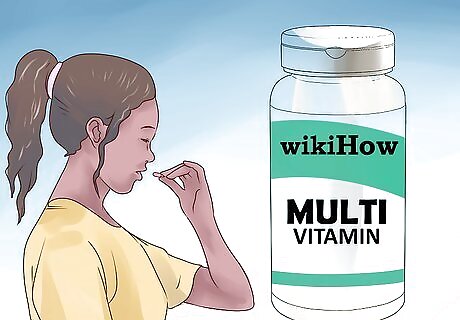
Treat your hair from within by taking a multivitamin. Use a hair vitamin that will increase your hair growth rate and lengthen your natural anagenesis (growth phase).

Incorporate healthy habits. Drink at least eight cups of water and eat healthy foods such as fish, fruits, vegetables and nuts. Exercise regularly to increase circulation to your scalp. Manage your stress with relaxation exercises or meditation. Stress can cause your hair to fall out.
Knowing Your Hair Growth Timetable
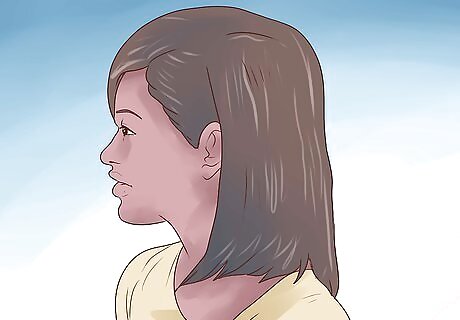
Expect to wait about one to one and a half years for shoulder length growth if you start with a clean shave. African hair grows at the same rate as every other person's. You can expect growth of about 1/2" (13 mm) per month if you take great care of your hair. Your hair can heal. "I cut my hair a year ago due to heat damage. Then, I followed all these steps and my hair is now almost past shoulder length. This article is a life-saver!" - Kamya B. Try flexi rods and coconut oil. "I’ve been air-drying my hair with flexi rods which has helped a ton. I also love applying coconut oil to ends of my hair as this allows it to dry smoothly and encourages growth." - Sarah B. Have a story our readers should hear? Share it with 1 billion+ annual wikiHow users. Tell us your story here.
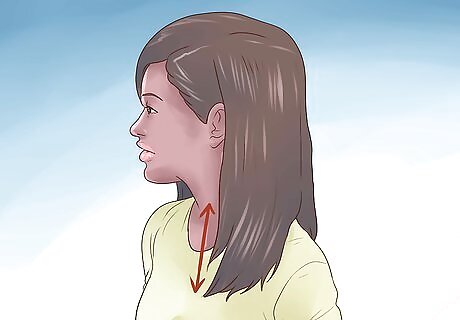
Wait another 6 to 15 months for your hair to reach armpit length.
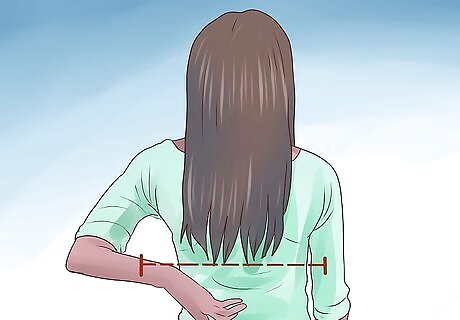
Add another 9 to 18 months to hit bra-strap length. Growing your hair until the ends hit your bra strap will take about 3 years total.
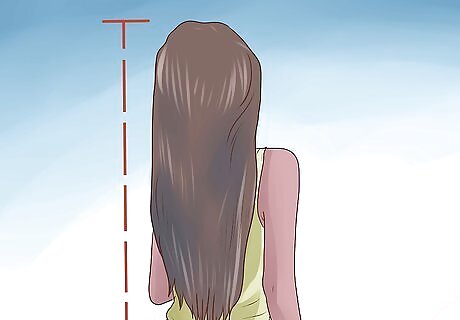
Expect hair growth to your waist to take 3 to 4+ years. Everyone's hair grows at a different rate. Make sure that you don't compare yourself to other people; you'll only get frustrated. Just keep taking care of your hair, and be patient. You'll get results.
Styling Your Hair While It Grows Out
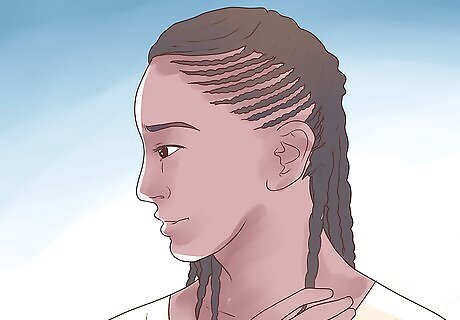
Use protective styles that don't require you to constantly redo your hair. Some examples of good styles include twists or bantu knots. Braid: do a simple braid from the top and when you finish, tie the end. You can also add a hair band. Twists: Divide your hair into rows. Then divide each row that you just made into 2 separate sections. Starting at your hairline, twist the 2 sections of the first row together. Keep twisting your hair as you move toward the back of your head, grabbing a little more hair each time you go a little further down the row. Bantu knots: Divide damp hair into sections, using a comb to create really precise parts. Twist each section of hair into a "rope," working some gel or pomade into your hair as you twist it. Keep your hair taut until you've twisted the entire section into a rope. Turn the rope a few more times until it starts to curl in on itself. Doing this will create a firm coil at the base. Wrap the rope of hair around the base to create your knot. You can secure it by either tucking the ends under the knot, using pins or using elastics. Be gentle and watch out for traction alopecia. It's the constant force being put on the hair follicle from wear styles that are too tight resulting in breakage and bald spots. The first sign will be pain at the site and inflammation of the hair follicle it'll feel like a bump. Take the hair out where you're suffering from the inflammation and let the hair 'breathe'. Continue to care for your hair while it's in protective styles. The hair will still dry out and the scalp may need some TLC as well. Get a spray bottle and fill it with water, aloe vera juice, some natural oils (anything that will help to restore moisture) and spray it all over. If you have ample time, put your whole head under the shower head toward the beginning of the day and let your hair air dry the rest of the day. If protective styles are being worn for extended periods of time co-washing can also be done, but an application bottle may be needed to try and reach under braids.
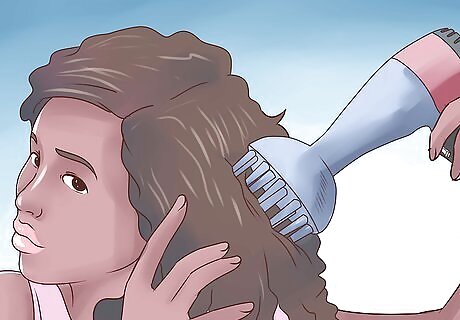
Go natural. Natural hair can be long and beautiful if you know what you are doing. Protect your hair while styling. To straighten natural hair while protecting it from heat damage, blow dry your hair with a comb attachment and wet setting before you give it a quick sweep with a flat iron.
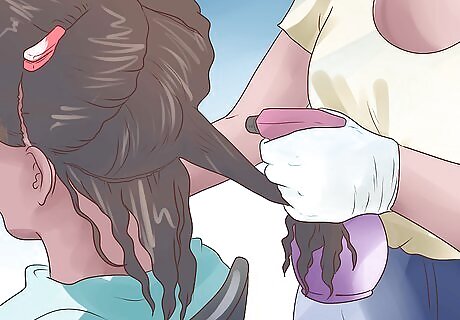
Get a Brazilian keratin treatment. It straightens your hair or loosens the curl with no chemicals. They start from about 1 day to 6 months. Afro hair is washed less often so the treatment will last more than the time said.
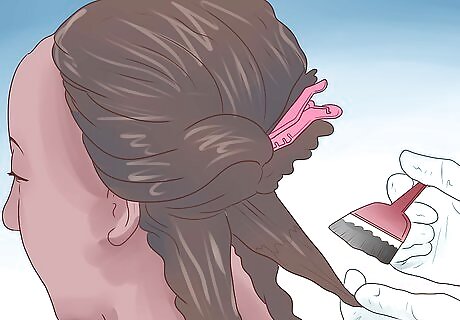
Use a relaxer if you don't want to go natural. Relax your hair no more than once every 8 to 10 weeks, or 4 or 5 times per year. Remember that relaxers are harsh chemicals that can potentially damage your hair, it's good to limit them to prevent overlapping and over-processing. Start by applying a scalp protector or petroleum jelly to your scalp and to your hair shaft. Apply the relaxer to your roots according to the manufacturer's instructions. Make sure to follow the leave-in time that's recommended on the product. Wash out the relaxer in warm water with a neutralizing shampoo. Wash and rinse 3 times. The fourth time, leave the shampoo on for about 10 minutes before you rinse it off for the last time.
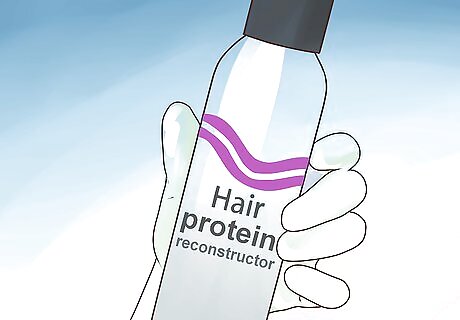
Use a protein reconstructor after you use a relaxer. Both shampoo and relaxers will remove needed nutrients and shielding from your hair, leaving it dry and fragile. Protein reconstructor will help to prevent damage and will make your hair more resilient.
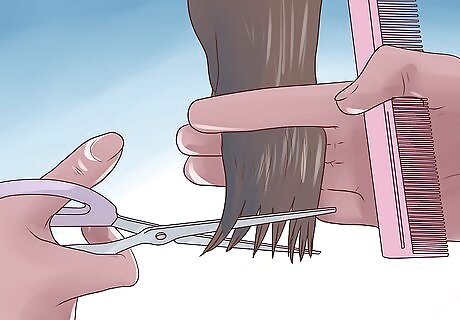
Clip your ends about every 8 weeks or every time you have your hair relaxed. When you have split ends and you don't cut them, they will continue to split all the way up your hair shaft, which will cause breakage. To keep your hair growth steady, avoid taking off more than 1 to 2" (2.5 to 5 cm) at a time.




















Comments
0 comment